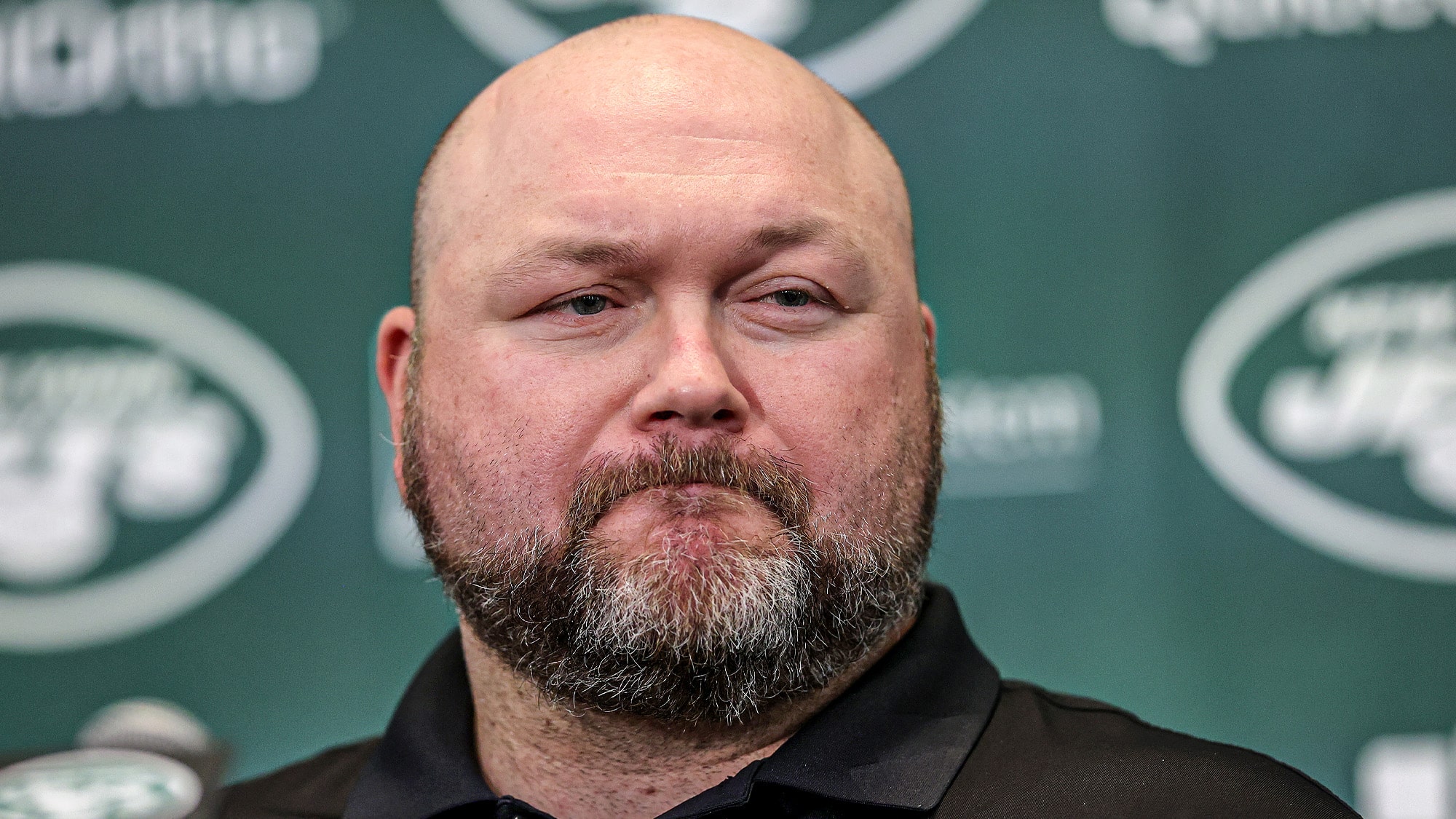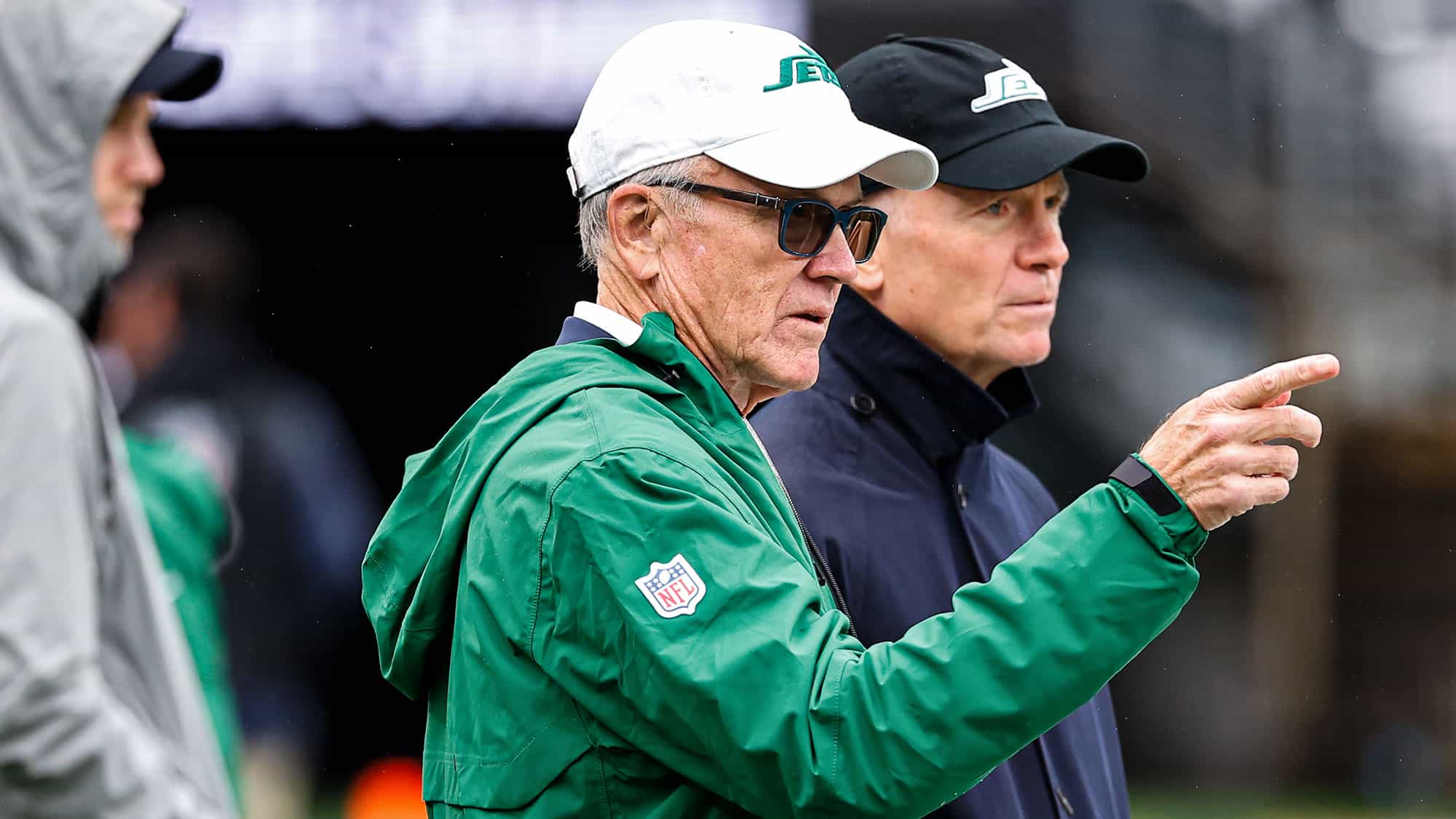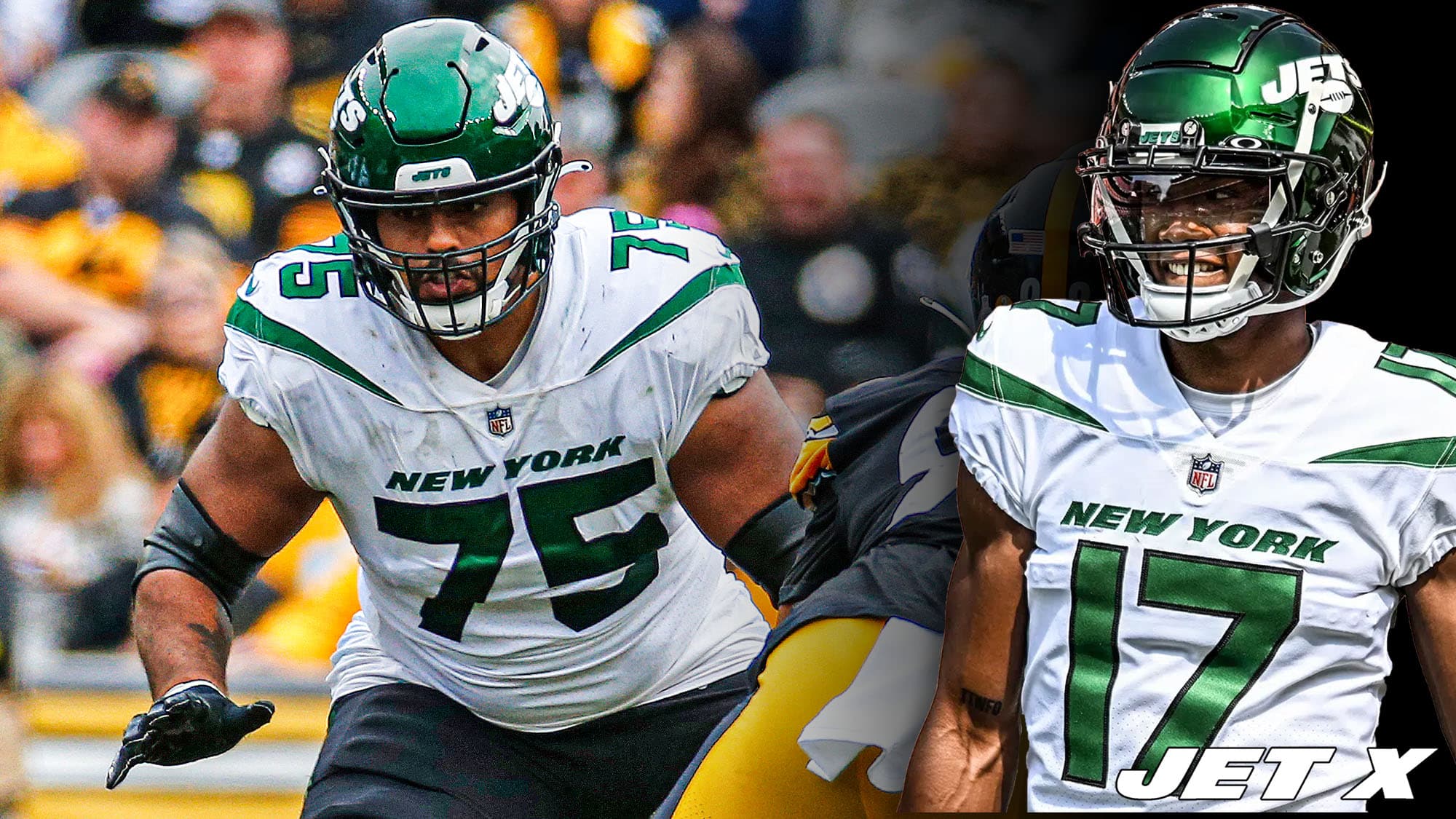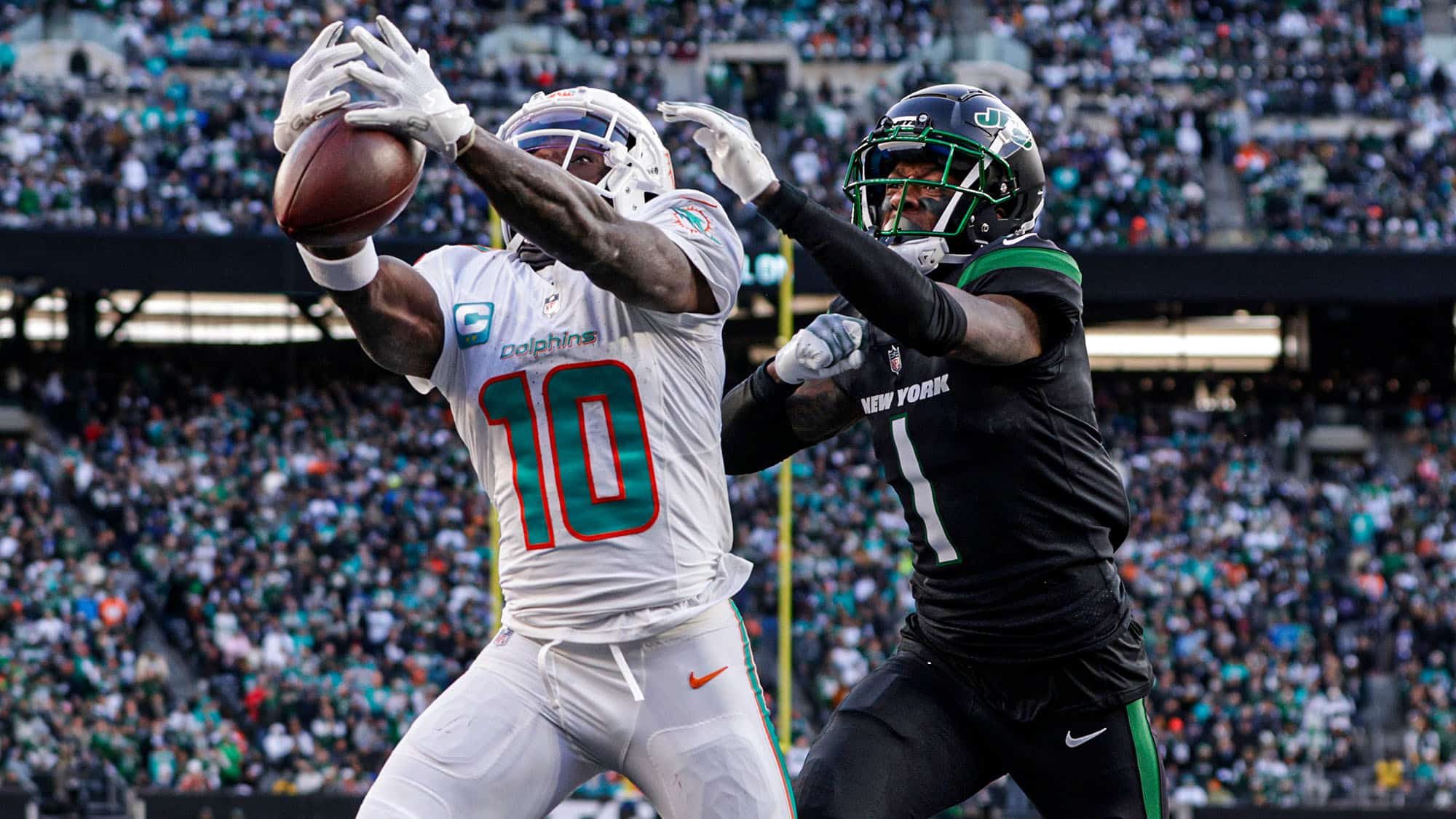Few of the New York Jets’ 2024 free agents are worth re-signing
The New York Jets’ 2023 offseason is a case study of how not to build a roster via free agency. The team’s signings mostly ended in abject failure or underachievement. That has led to doubts about whether the Jets would have been seriously competitive even with Aaron Rodgers.
In 2024, before signing other team’s free agents, the Jets will need to decide what to do with their own. We’ve briefly discussed the players the Jets should and should not bring back, but let’s go through it specifically for their free agents. For most of their impending free agents, the Jets’ decision should be quite clear.
Let go
Duane Brown
As feared, Duane Brown was never truly healthy and played putridly when on the field. He gave up a 13.2% pressure rate and had a 53.5 run-blocking grade on 110 block snaps. Brown will likely retire after the season.
Carl Lawson
One of Joe Douglas’ most disappointing free agent signings, Carl Lawson‘s tenure with the Jets was irrevocably marred by his Achilles tear in 2021 training camp. While he managed to stay healthy for the 2022 season, his performance was merely average and far below what the Jets expected from their $15 million man.
In 2023, a back injury during training camp sapped whatever ability he had left. Lawson was inactive for a good chunk of the season and won’t be back, though he leaves a $6.3 million dead cap charge in his wake.
Dalvin Cook
Perhaps the worst signing Douglas has made (if not for Laken Tomlinson), Jets fans who mercilessly berated critics of the Dalvin Cook signing have seen exactly where that opinion came from. Nothing we have seen from Cook this season was unpredictable.
Jordan Whitehead
Many Jets fans thought the team got a bargain when they signed Jordan Whitehead to a two-year, $14 million deal. In retrospect (for everyone but Joe Blewett), it was Whitehead who got the steal.
He has allowed seven receiving touchdowns this season, the worst mark among all safeties and tied for the fourth-worst among all defensive players. He has an 18% missed tackle rate, the fifth-worst mark among safeties. His 17.5 yards per reception allowed are the sixth-worst at the position. In other words, Whitehead is one of the worst safeties in the NFL. Sayonara.
Mekhi Becton
The whole Jets fanbase wanted to see what the Big Ticket could do when healthy. Mekhi Becton showed exactly what he can’t do: play competent tackle in the NFL. Becton has the most sacks allowed (12) and the second-most penalties (16) among all offensive linemen, and that’s despite having the 71st-most snaps.
There was no difference in his play before or after his ankle injury. His technique is simply atrocious, rivaling that of Billy Turner. The fact that Becton continuously demonstrates his immaturity on social media is just the nail in the coffin. The Jets should not even consider bringing Becton back. (As Michael Nania asked me, would you bring back Becton if he paid the Jets $1 million to do so? I said no.)
Randall Cobb
Randall Cobb was brought in to be the Jets’ fifth receiver and appeared to have something left in the tank for the role.
Instead, perhaps he just hit his final wall, or maybe he checked out when Rodgers went down, but he was the worst receiver in the NFL until the Jets stopped giving him so many snaps. Cobb has caught just 4 of 16 targets (25%), and that’s with a 9.7 average depth of target. He has a 33.3% drop rate and a 20.8 targeted passer rating. Even Rodgers won’t be able to get Cobb back.
Al Woods
While Al Woods performed well enough as a run defender and the Jets’ run defense fell off significantly when he ruptured his Achilles, he simply does not provide any pass-rush threat whatsoever. Defenses took advantage of the fact had just a 3% pressure rate, choosing to pass the ball when they saw him in the game. While the team will need a run-stuffing replacement, it can’t be Woods.
Billy Turner
Joe Blewett has called Billy Turner the worst tackle he’s ever seen. Turner may have some competition there from Becton and Max Mitchell, but his 10.6% pressure rate exceeds either of theirs. As with Cobb, no matter how much Rodgers advocates for his buddy, Turner will not be back with the team.
Trevor Siemian
A mere formality, as the Jets preferred Tim Boyle over Trevor Siemian before releasing the former.
Jake Hanson
Some Jets fans saw Hanson’s play as competent enough to be a possible backup guard. The Jets already have Wes Schweitzer in that role, and although Hanson’s 5.4% pressure rate is not awful for a backup guard, he was replaced by Xavier Newman against Cleveland. Perhaps the Jets could bring Hanson back on the 90-man roster or sign him to a futures deal, but he’s not a reliable backup.
Kenny Yeboah
There is still a contingent of Jets fans who think fondly of Yeboah due to their predraft evaluations. Ultimately, Yeboah has had his opportunities as the Jets’ third tight end but never did anything with them. He hasn’t stood out as a blocker, which is key for a third tight end. While the Jets can keep him around on the 90-man roster, he’s not worth signing to a free-agent deal.
Re-sign
Chuck Clark
Chuck Clark may have been the best acquisition Douglas made last offseason. He is a rock-solid strong safety with excellent football instincts. He had not missed a game in three years but tore his ACL during OTAs. He can be a bargain Whitehead replacement. Value: 1 year, $2.5 million, $2 million guaranteed
Quinton Jefferson
The Jets’ defense has seen how much they miss Quinton Jefferson since he went on injured reserve. A consistent pressure machine in the middle, he will likely receive a modest pay bump this offseason. Still, because the run game is not his strong point, his price will still be very affordable. Value: 2 years, $9 million, $6 million guaranteed
Greg Zuerlein
Greg Zuerlein missed his second field goal of the season when the Browns blocked it. He is still 32-for-34 (94.1%) on the year, including 5-for-6 from 50+ yards. He’s getting up there in age, but ride the kicker until he shows signs of decline. This was one of Douglas’ better signings. Value: 1 year, $3 million, $2.5 million guaranteed
Solomon Thomas
The former 49ers first-round pick underwhelmed in his first year with the Jets but played solidly as Jefferson’s backup in 2023. Solomon Thomas struggles against the run but showed some more thump as a pass rusher. He’ll be back. Value: 1 year, $3 million, $2.5 million guaranteed, $2 million incentives
Justin Hardee
The Jets’ special teams captain showed the importance of his presence in his absence when the team’s punt coverage struggled. Value: 1 year, $2.6 million, $1.3 million guaranteed
Connor McGovern
His $1.9 million deal was a bargain. With his season-ending injury, the Jets can probably get him back for a similar price, and they should do so. Value: 1 year, $1.9 million
Ashtyn Davis
Davis has performed pretty well in his increased role as the Jets’ big nickel linebacker-type. If the Jets bring back Clark to be their strong safety but still want to play big nickel, Davis can fill that role. Value: 1 year, $2 million
Thomas Morstead
The Jets’ punter has had a strong season even if he faded a bit down the stretch. He loves being a Jet and will likely come back on the veteran minimum once more. Value: 1 year, $1.21 million
Total contract value (8 players): $25.2 million
The big question mark
The Jets’ biggest free-agent decision will concern Bryce Huff. Pretty much every other decision is a slam dunk (though you can quibble about some of the re-signings). Huff keeps popping up in articles because there are several unknown variables.
Statistics
How Huff will be valued on the open market is iffy. He has a 19.1% pressure rate, ranking second among 70 qualified edge rushers (min. 250 pass rush snaps) behind only Micah Parsons.
Even after adjusting for Huff’s above-average true pass set frequency, he still ranks third in adjusted pressure rate at 18%. He has also turned those pressures into sacks at a higher rate than in 2022 (2.55% vs. 2.33%), ranking 21st in that category. He has shown his ability to be both a disruptor and a wrecker in the passing game.
Strikes against him
Still, the fact remains that Huff has played only 42% of the Jets’ snaps. Among the top 13 highest-paid edge rushers, none have played fewer than 69% of the defensive snaps in their last healthy season. John Franklin-Myers, as the 20th-highest-paid edge defender in APY at $13.75 million, is the next-closest at 55%, and even he was at 64% the year he signed the contract in 2021.
Furthermore, the reason Huff’s snap count has been so low is compelling. He’s not just a below-average run defender; he’s significantly so. Among 97 edge defenders with at least 120 run defense snaps, Huff’s 46.2 Pro Football Focus grade ranks 93rd. That’s why the Jets try to limit his run-defense snaps; he’s a true liability in that area. How will the market address that kind of player?
To add fuel to the fire, Huff has slowed down tremendously as a pass rusher after a scorching hot start. Over his last eight games, he has just a 9.8% pressure rate, far below the 11.7% edge rusher average. Whether he has slowed down due to an increased snap count or teams have begun to double-team him more often, a pure pass rusher whose pass-rushing efficiency decreases also loses value on the market.
Market value
Until now, I’ve been comparing Huff’s contract expectations to Montez Sweat’s four-year, $98 million extension with the Bears. However, Sweat has a 72.6 run defense grade on 212 snaps (as opposed to Huff’s 128). He’s an all-around defender. Nine of the top-10 highest-paid edge rushers (by APY) have above-average run defense grades, and some are at the top of the league in that area.
Therefore, what will Huff command on the market? Carl Lawson’s three-year, $45 million deal with the Jets may seem like a more appropriate comparison — but even Lawson had a 61.1 run defense grade in his final year in Cincinnati, and he also played 68% of the defensive snaps. Lawson also finished strong in each of his seasons with the Bengals, while Huff has done the opposite thus far.
Most Jets fans seemingly project that Huff will receive a contract in the $15 million range. The exclusive franchise tag for Huff will be $21.9 million (as his listed position is outside linebacker).
If the Jets do not tag Huff, the chances that he signs elsewhere become ever greater, leaving the team with only a third-round compensatory pick. Still, they cannot afford to pay him $21.9 million for one year. The question becomes if they can and should pay him $15+ million over a multi-year deal.
If they keep him
While I included Huff in the list of free agents the Jets should bring back, I’m becoming less convinced of that as time goes on. The Robert Saleh-Jeff Ulbrich regime clearly will not increase Huff’s snap count to the level usually required to pay an edge rusher top dollar. If there was a debate among Jets fans about paying Quinnen Williams due to his 65% snap share, how can there even be a question about whether to pay Huff? The answer should be obviously not.
To those who argue that Huff should see the same snap share as Jermaine Johnson (66%), I point to Huff’s putrid run defense grade. The Jets’ run defense is already porous enough; can they afford to have an edge defender of that caliber on the field even more than they already do? One of the key reasons for the decline in run defense may be Huff’s usage as compared to Lawson’s; despite the latter’s poor run defense grade in 2022, he set a solid edge on his 58% snap share.
Additionally, does it make sense to commit so heavily to a player coming off half a season of below-average play? Huff was so dynamic in the first half of the season that his overall numbers are still outstanding despite that decline. Still, the decline is there, and it’s noticeable on gameday. Can the Jets trust that Huff will be first-half Huff rather than second-half Huff?
Huff replacement
On the other hand, if the Jets lose Huff, their edge rusher room suddenly looks quite thin. Lawson will be gone, which means the team is left with Franklin-Myers, Johnson, Will McDonald, and Micheal Clemons. For a typical defense, that would likely be a deep enough edge rusher group, requiring perhaps one other run-stuffer. In the Saleh rotation, though, there will be a Huff-sized hole.
Saleh alluded to the team’s possible preparation for that eventuality. He noted that he can foresee a Johnson-like leap for McDonald in his second season. It’s not an unreasonable guess, either; McDonald is a freakish athlete, has started showing more flashes of potential as the season progresses, and has more upside against the run than Huff.
The Jets spent a first-round pick on McDonald. If they don’t trust him to take that leap in 2024, why did they draft him in the first place? They took him without assuming that they would be increasing Huff’s snap count nearly as much as they did. It seems pretty clear that their plan was for him to replace both Huff and Lawson in 2024, as neither player was likely to return.
The Jets doubled Johnson’s snap count in 2024 without any concrete evidence that he would make the leap. Will they simply do the same for McDonald and use him similarly? The stand-up style makes sense for McDonald as it does for Johnson. If the Jets increase McDonald’s snap count from his current 18% level to 60%, they will effectively cover all 42% of Huff’s missing snaps.
What they should do
I wrote previously that I think the most likely scenario for Huff is a tag-and-trade. While I’ve heard it pointed out that no team is likely to want Huff for $21.9 million, the whole point of a tag-and-trade is for the acquiring team to work out an extension in place of the tag. It is difficult to believe that no team would trade for Huff in a tag situation.
What Huff would command in return is also an interesting question. At a minimum, he should return more than the third-round compensatory pick the Jets would presumably receive if he left as a free agent. Therefore, the bar for a Huff trade should be set at a second-rounder, perhaps with another mid-round pick thrown in.
Would a team make that trade? That’s the millions-of-dollars question. It seems likely to me, as premier pass-rushing is always at a premium in the NFL. Huff’s 19.1% pressure rate has 63.2% more relative value than an average edge rusher. In a passing league, is that not worthwhile even with his poor run defense?
In the years Dwight Freeney played that were tracked by PFF (2006-17), he posted several seasons with a run defense under 50.0, including 39.9 in 2008, when he posted a 14.8% pressure rate and 10.5 sacks. The Colts kept playing him, and that was in a far more run-happy league. Freeney is a Hall of Fame finalist for the second consecutive season and will most likely make it to Canton sooner rather than later.
This is not to say that Huff is Freeney, but there have been elite pass rushers who struggled mightily against the run and still played a starter’s workload of snaps. Some team will likely take that chance, even if that team is not the Jets.
I think the Jets should try to tag and trade Huff. In so doing, they give themselves the cap flexibility to try to sign a No. 2 receiver and perhaps one other big free-agent investment. If they can recoup the second-round pick they lost in the Rodgers deal, so much the better.













If the Jets lose Huff, do they get a 3rd round compensatory pick?
I wouldn’t be quite as sure about dumping Becton. The idea that he would have declined so precipitously from his rookie year irrespective of his injuries does not really make sense. For one thing, he wasn’t consistently awful, he had some moments this year, but then seemed to fall completely apart in the last few games. Maybe you could fault him for not playing as well as he should have despite feeling sub-par, but then again Duane Brown couldn’t even step on the field because of his lingering injuries. I know Becton was a disaster but I don’t totally discount the possibility that he could rebound in performance once his injuries are fully healed.
While the possibility is always there, the Jets cannot afford to find out with the way their offensive line has fallen apart in the past two years. They need not only two reliable starters but also a reliable swing tackle. One of those starters will likely come from the draft; the starter and swing tackle should come from free agency. If the Jets are already going to roster Carter Warren (and if they’re dumb enough to roster Max Mitchell), they need a real backup tackle and not a project. That’s what Becton would be at this point.
Additionally, and this should be the clincher, Becton is clearly a malcontent. He blasted the coaches during the offseason and has kept up a steady stream of immaturity on his X account. That is not a player the Jets should want back.
I’m shocked you want Hardee back, you hate specialists. I could go either way on Huff. I like him and would hate to lose him but I do think Jets’ fans especially fall in love with their players. I don’t see him as someone they CAN’T replace. I actually think McDonald can be a better player. That said, I’d like them to get something for him.
You’re correct, I do hate specialists, but I think we saw how much the Jets missed Hardee when he was out. I feel the same way about Huff and McDonald.